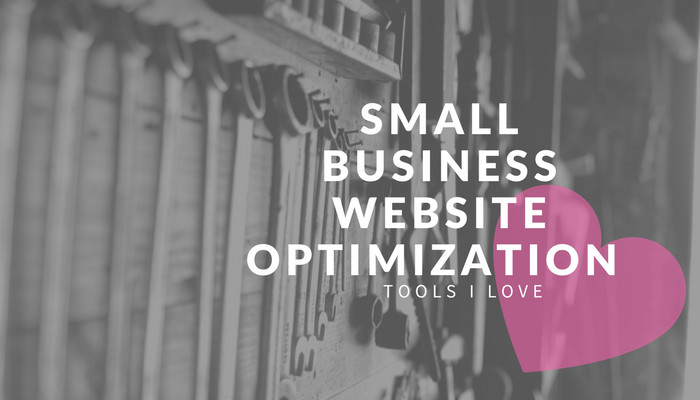Are you set up to measure the things that matter to your small business? As a digital marketing consultant, I am often asked to help businesses improve sales performance. I almost always starts by implementing a few website optimization tools.

Small Business WebSite Optimization Tools
These tools are free or near free. Depending on the site you have, most of them should be fairly easy to implement if you are on a platform like WordPress, Shopify, Joomla, Wix, Squarespace or other CMS. While the world of analytics tools, like other marketing technology, is constantly growing, the tools outlined here are, in my opinion, consistently the best performing and easiest to use.
Analytics 101 – Tag Management
Whenever we start talking about optimizing or measuring online activity, the first thing I look to make sure gets set up is a tag management process. Before you know it, you can be inundated with javascript snippets and tracking tags, unless you have the best small business server set up and know how to use it, you’re likely in for a long night of headaches. For those who are anxious about editing the code of their website, Tag Managers are a great way to allow you to add tags and snippets without digging into the code. Ask your webmaster to install the tag manager once and you can add new pieces of analytics, ad conversions, and other tags without editing your site’s core code. There are paid tag management solutions available, but most businesses will do just fine with Google Tag Manager.
Web Analytics
The king of web analytics, Google Analytics. It’s amazing how many small business sites I come across that rely only on WordPress stats or server stats. If you don’t have Google Analytics installed, stop what you’re doing and go do that. Last year I share my thoughts on how to get started with Google Analytics over at CIO.com. In the article, I emphasize the importance of knowing what you want to measure. Take the time to sketch out an analytics framework. What are you looking to learn about your website and what are you looking to measure.
Visualization
Once you have your analytics framework mapped out and an analytics tracking code installed you’re all set, right? Not quite. Analytics gets you a bunch of insights and data on site performance. But let’s say you notice that you’re getting a bunch of traffic to a landing page. You don’t have a conversion funnel setup and you don’t have the technical support to track each step of interaction with your form.
Tools like Crazy Egg, Hotjar, and Mouseflow are leaders in the visualization category.
I prefer Mouseflow above the rest. You get a lot more than just heat maps and scroll tracking. With Mouseflow, you can fairly easily recognize and track most form fields and steps within a conversion funnel to get even more granular in your analysis.

All of this is designed to find data that can help you identify why your page isn’t performing. Perhaps there are competing call to actions on a landing page. Maybe a form is too complex or confusing. With data visualization, you can see why pages aren’t performing, not simply that they aren’t performing.
Surveys
The final piece of the analytics puzzle is collecting qualitative, first person research. This is traditionally conducted through research. Tools like Hotjar, which also offer visualization capabilities offer survey functionality. Survicate is another survey tool that offers a good balance of functionality and value.
What Small Business WebSite Optimization Tools Do You Love
These are my go to analytics tools. Well performing analytics stacks include a mix of the tools outlined here along with tools to identify website visitors. What analytics and website optimization tools do you love? Leave me a comment below.

Leave a Reply